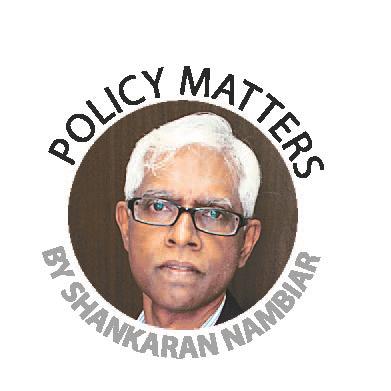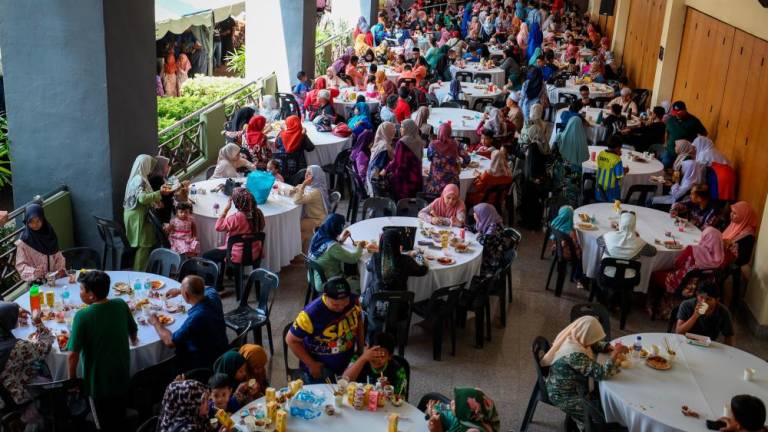BEFORE the movement control order was announced, I had benchmarked the effects of the coronavirus outbreak against the SARS problem that Malaysia had experienced in 2003. Based on the SARS experience, I had thought that the government had the institutional memory to effectively tackle the present outbreak.
I made two assumptions. One, that the outbreak would affect the economy with about the same severity as SARS had. Two, that the global economy would be moderately affected. It is on this basis that I arrived at my forecast of about 3% growth for the year.
In fact, the previous government was slow to impose firm measures to restrict the inflow of foreigners from high risk countries, prioritising the economy over the danger of an outbreak. Tun Dr Mahathir Mohamad had recently stated that the virus could disrupt the economy more than the 1997 crisis did.
The global environment is turning out to be more severe than expected. Countries are almost self-isolating; airports are closed to non-citizens; and some countries are not receiving their citizens from specific virus-striken countries. Countries around the world are observing full lockdowns. The movement of persons within countries have come to a standstill.
In our own country, in addition to the movement control order (partial lockdown), malls, movie theatres as well as offices are closed, travel is restricted, tourism is all but dead, restaurants can only provide delivery services, and aside from essential services there is a halt to the provision of most other services – and that includes laundry shops. It will not be long before grocery shops have difficulty convincing their workers to come to work.
There is evidence that factories are having difficulty obtaining imported inputs. The electrical and electronics industry is badly hit, but it is not alone; so is the car industry. In fact, most export-oriented manufacturing industries are facing problems with workers and imported intermediate products.
Both the ringgit and the KLCI have taken a tumble. Volatility is high and expectations are low.
The government has announced a stimulus package of RM20 billion and other additional measures. Those were calculated before the partial lockdown. An additional package will be necessary; the quantum will depend on the length and intensity of the outbreak.
In addition to the domestic virus outbreak, the country faces other sources of instability: the global slowdown, political instability and plummeting oil prices.
Morgan Stanley has forecast global growth to be close to 0.9% for the year, the first half being in negative territory (-0.5%). China is widely expected to have a growth rate of between 2.7% and 3.5%, and the US could well have zero growth if the superpower does not run into negative growth (-0.5%).
Malaysia could find itself with a GDP growth of anything between 1.8% and 2.3%, although the figure may have to be revised depending on how long it takes to flatten the curve.
The disruptions that factories are facing and the slowdown in companies will mean that jobs will be lost. While the nature of business for some organisations allows working from home, there are others for whom this will mean layoffs.
Bank Negara Malaysia has had two rate cuts within the first quarter of 2020, something out of character for the bank. A third rate cut cannot be ruled out later in the year. But monetary policy will have to be supported by an expansionary fiscal policy.
There is a crunch with respect to fiscal policy. The government has declared a RM1 trillion debt. The budget deficit as a percentage of GDP was 3.59% in 2018 and was expected to inch to 2.59% in 2020. That is not likely. The budget deficit would perhaps do well at 4.5%. The bump in an expansionary policy lies in the sharp fall in oil prices. Some analysts are pessimistic about the price of oil, not excluding the likelihood of it coming down to the teens.
But that is not all, once the Covid-19 virus is contained, policymakers will have to compute the cost burden on the healthcare system, revive all sectors of the economy (and it is not only the aviation industry that might seek government aid), and above all else pump up consumer and producer confidence and create an environment where job creation is resumed. All of this is going to mean a lot of government expenditure.
Dr Shankaran Nambiar, a senior research fellow at the Malaysian Institute of Economic Research, is author of Malaysia: At the Edge of Transformation.














